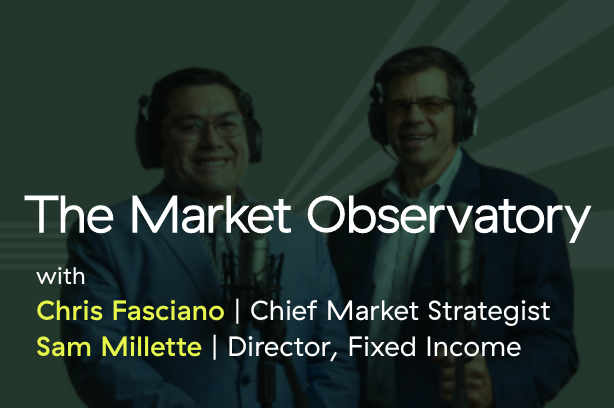“If you are driving in a fog, you slow down.” — Fed Chairman Jerome Powell, October 29, 2025
October 30, 2025
“If you are driving in a fog, you slow down.” — Fed Chairman Jerome Powell, October 29, 2025
October 14, 2025
What does a data-dependent Fed do when the data isn't available? In this month's episode of the Market Observatory, Sam and I discuss how the government shutdown is affecting the central bank and investors, including:
October 2, 2025
As of midnight Tuesday, the U.S. government shut down, as lawmakers couldn’t reach an agreement on a short-term bill to continue funding government expenditures. Currently, none of the 12 appropriations bills have been passed. This is the first shutdown since December 2018. There is certainly a human element to consider, as many government workers will be furloughed and others will continue to work without pay. Benefit payments and tax collections will continue.
October 2, 2025
September was another positive month for markets, as the S&P 500, Dow, and Nasdaq set new record highs. The international story was similar, with developed and emerging markets gaining for the month. Short-term interest rates also fell in September, as the Fed resumed cutting rates at its mid-month meeting. Markets anticipate one or two additional rate cuts by year-end.

Episode 11
September 10, 2025
Episode 10
August 13, 2025
Episode 9
July 23, 2025
Episode 8
June 18, 2025
Episode 7
May 14, 2025
The information on this website is intended for informational/educational purposes only and should not be construed as investment advice, a solicitation, or a recommendation to buy or sell any security or investment product. Please contact your financial professional for more information specific to your situation.
Certain sections of this commentary contain forward-looking statements that are based on our reasonable expectations, estimates, projections, and assumptions. Forward-looking statements are not guarantees of future performance and involve certain risks and uncertainties, which are difficult to predict. Past performance is not indicative of future results. Diversification does not assure a profit or protect against loss in declining markets.
The S&P 500 Index is a broad-based measurement of changes in stock market conditions based on the average performance of 500 widely held common stocks. All indices are unmanaged and investors cannot invest directly in an index.
The MSCI EAFE (Europe, Australia, Far East) Index is a free float‐adjusted market capitalization index that is designed to measure the equity market performance of developed markets, excluding the U.S. and Canada. The MSCI EAFE Index consists of 21 developed market country indices.
One basis point (bp) is equal to 1/100th of 1 percent, or 0.01 percent.
The VIX (CBOE Volatility Index) measures the market’s expectation of 30-day volatility across a wide range of S&P 500 options.
The forward price-to-earnings (P/E) ratio divides the current share price of the index by its estimated future earnings.
Third-party links are provided to you as a courtesy. We make no representation as to the completeness or accuracy of information provided on these websites. Information on such sites, including third-party links contained within, should not be construed as an endorsement or adoption by Commonwealth of any kind. You should consult with a financial advisor regarding your specific situation.
Member FINRA, SIPC
Please review our Terms of Use.
Commonwealth Financial Network®